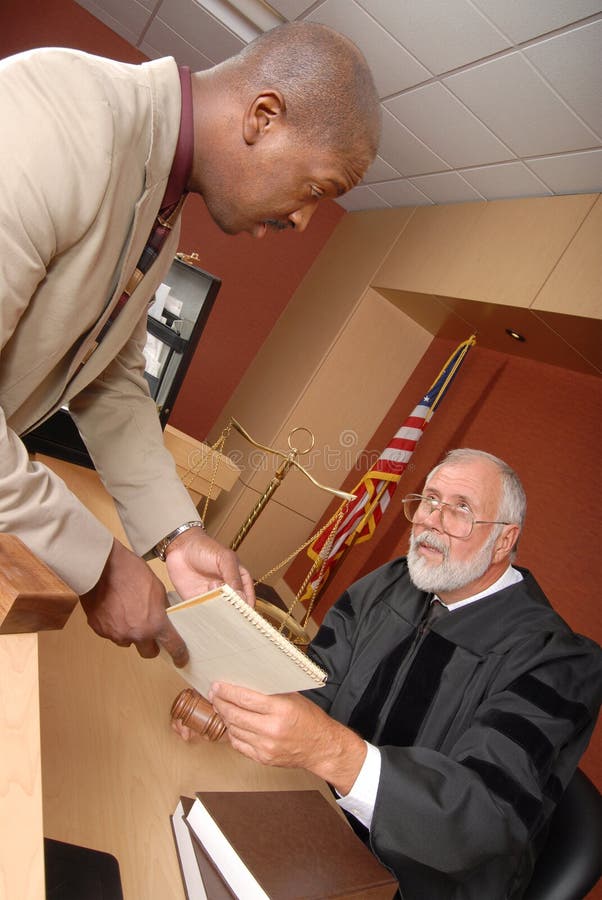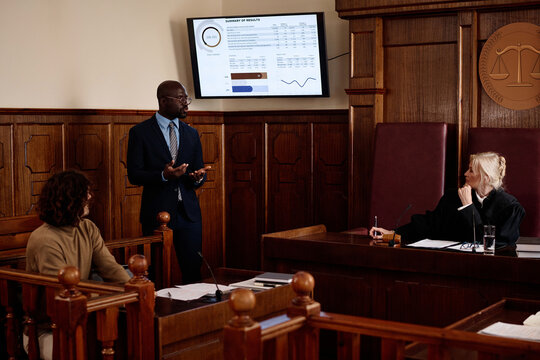Achieving Success in Courtroom Trials: The Importance of Professional Trial Presentations
Achieving Success in Courtroom Trials: The Importance of Professional Trial Presentations
Blog Article
Navigating the Intricacies of Trial Presentations: Tips for Seamless Delivery and Engaging Arguments
In the world of lawful proceedings, the art of trial presentation stands as a vital component of success. The intricacies integral in test presentations require a delicate balance of skill, finesse, and method.

Understanding Trial Goals
To efficiently navigate a trial, it is critical to have a clear understanding of the objectives that need to be accomplished. Prior to entering the court room, lawful groups must define their goals and preferred results. These purposes act as guiding principles throughout the trial, shaping techniques and influencing decision-making processes.
Comprehending test goals entails a thorough evaluation of the instance, lawful criteria, and the customer's ideal passions. Trial Presentations. It calls for a thorough exam of the facts, identifying key issues, and preparing for possible obstacles. By establishing measurable and particular goals, attorneys can customize their discussions and disagreements to align with the desired outcomes
In addition, a clear grip of trial objectives enables lawful groups to focus on proof, witnesses, and lawful disagreements efficiently. It enables the growth of a systematic narrative that resonates with the discretionary, strengthening the total situation presentation.

Organizing Evidence Efficiently
Having a clear understanding of trial objectives lays the foundation for arranging proof successfully in legal proceedings - Trial Presentations. By aligning the discussion of evidence with the desired outcomes of the test, lawful teams can strengthen their debates and improve their persuasiveness. One important aspect of arranging evidence is categorization. Grouping proof based on themes or importance to certain legal components can assist streamline the discussion and make complicated information much more digestible for the court or jury.
An additional crucial element in organizing evidence effectively is establishing a sensible circulation. Offering evidence in a consecutive and coherent way can aid develop an engaging narrative that supports the lawful arguments being made. Furthermore, making use of visual help such as timelines, charts, or graphes can even more improve the company of proof and aid in clarifying intricate connections or sequences of occasions.
Moreover, making certain that all evidence provided is permissible and relevant to the case is vital. Unnecessary or inadmissible evidence can take away from the toughness of the debate and potentially harm the trustworthiness of the offering event. For that reason, a careful testimonial and option procedure should be undertaken to include only the most lawfully sound and impactful evidence in the trial presentation.
Crafting Influential Narratives
Crafting engaging narratives plays a critical function in providing influential debates throughout legal process. A well-crafted story has the power to astound the target market, stimulate feelings, and inevitably guide the choice for today event. When creating a story for a test discussion, it is important to establish a clear storyline that highlights key factors and attaches them in a systematic fashion. Begin by laying out the realities of the instance in an engaging way, making sure that the sequence of events is easy to follow. Introduce characters effectively, giving history details that assists the audience understand their inspirations and activities. Additionally, including brilliant descriptions and appealing language can bring the narrative to life, making it much more memorable for the court and jury. By weaving together proof, statement, and legal debates right into a influential and cohesive story, attorneys can successfully advocate for their customers and boost the likelihood of a desirable result in view website the courtroom.
Grasping Aesthetic Aids
Reliable use of visual help is essential to improving the influence and clarity of trial discussions. Aesthetic aids, when used tactically, have the power to streamline complex info, enhance key points, and leave an enduring impact Look At This on the discretionary. To grasp aesthetic help in test discussions, it is essential to make sure that they are clear, succinct, and relevant to the arguments being made.
When integrating aesthetic help, such as graphes, photos, timelines, or graphs, into a trial presentation, it is important to maintain them aesthetically appealing yet specialist. The visuals need to complement the spoken debates, providing a visual representation of the details being discussed without frustrating the target market with unneeded details.
In addition, exercising with the aesthetic help in advance is essential to ensure a seamless distribution throughout the test. Familiarizing oneself with the material, transitions, and timings of each visual help can assist preserve the flow of the presentation and protect against technological problems that may arise.
Delivering Impactful Closing Debates
An engaging closing disagreement serves as the culmination of a test discussion, encapsulating the core story and encouraging the discretionary in the direction of a desirable choice. To deliver an impactful closing argument, it is critical to succinctly evaluate crucial points, highlight the toughness of your situation, and deal with any kind of weak points in a calculated way. Begin by describing the major disagreements description that support your customer's setting, emphasizing why the proof presented throughout the test supports your story. It is vital to create a feeling of cohesion and quality, assisting the court and jury towards the preferred conclusion.
Additionally, including emotional allure can further reinforce your closing disagreement. By attaching and humanizing the case on a personal degree with the decision-makers, you can stimulate empathy and understanding, influencing their assumption of the facts presented. Furthermore, stating the legal requirements that need to be met for a positive judgment can enhance the validity of your setting. Eventually, a well-crafted closing debate need to leave a lasting perception, compelling the court and court to regulation in your customer's support.
Conclusion
To conclude, grasping trial presentations includes recognizing goals, arranging proof, crafting narratives, using visual aids, and delivering impactful closing arguments. By implementing these strategies effectively, lawyers can offer their instance flawlessly and make engaging disagreements in the court. It is vital to navigate the complexities of trial discussions with accuracy and skill to achieve success in lawful process.
By lining up the presentation of evidence with the wanted results of the trial, legal groups can enhance their arguments and enhance their persuasiveness (Trial Presentations). To understand visual aids in test discussions, it is important to ensure that they are clear, succinct, and appropriate to the arguments being made
An engaging closing disagreement serves as the end result of a test presentation, enveloping the core narrative and persuading the court and jury in the direction of a positive decision. Begin by laying out the primary arguments that sustain your client's placement, emphasizing why the proof provided throughout the test supports your story.In final thought, understanding test presentations involves recognizing goals, organizing proof, crafting narratives, using visual aids, and supplying impactful closing disagreements.
Report this page